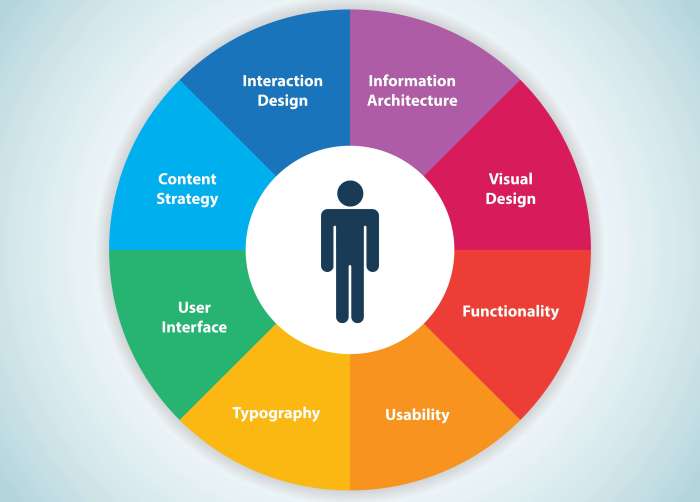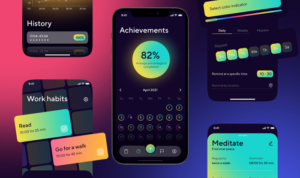Building an Interactive User Experience explores the key elements and technologies that shape modern applications, providing a roadmap to design seamless and interactive digital experiences that captivate users. From defining interactive user experience to testing and iterating designs, this journey promises to unlock the secrets of user engagement in the digital realm.
Understanding Interactive User Experience

Interactive User Experience (IUX) refers to the overall experience that users have when interacting with a digital product or service. It is crucial in modern applications as it directly impacts user satisfaction, engagement, and retention. A well-designed IUX can differentiate a product from its competitors and increase user loyalty.
Key elements that contribute to creating an engaging interactive user experience include intuitive navigation, responsive design, personalized content, feedback mechanisms, and seamless interactions. By incorporating these elements, developers can enhance user engagement and provide a more enjoyable and meaningful experience for users.
Examples of Successful Interactive User Experiences
- Instagram: The app provides a seamless browsing experience with its intuitive design and interactive features like stories and reels, keeping users engaged and coming back for more.
- Netflix: With its personalized recommendations, user-friendly interface, and easy navigation, Netflix offers a highly interactive user experience that keeps viewers hooked on the platform.
- Amazon: The e-commerce giant excels in providing a personalized shopping experience with features like one-click ordering, product recommendations, and user reviews, creating a seamless and engaging experience for customers.
Design Principles for Building Interactivity

When it comes to designing interactive elements for a seamless user experience, there are several key principles to keep in mind. By incorporating animations, micro-interactions, and feedback mechanisms, you can enhance user interaction and create a more engaging interface that keeps users coming back for more.
Animations
Animations can add a touch of personality to your website or app, making it more visually appealing and engaging for users. Whether it’s a subtle hover effect on a button or a full-screen transition between pages, animations can guide users through the interface and provide visual feedback on their actions.
- Use animations to draw attention to important elements on the page, such as calls to action or notifications.
- Keep animations smooth and consistent to avoid overwhelming or distracting users.
- Consider the timing and duration of animations to ensure they enhance the user experience without slowing down the interface.
Micro-interactions
Micro-interactions are small, subtle animations or effects that occur in response to user actions, such as clicking a button or scrolling through content. These interactions can provide instant feedback to users, making the interface feel more responsive and intuitive.
- Use micro-interactions to guide users through complex tasks or processes, such as form submissions or product customization.
- Keep micro-interactions simple and focused to avoid overwhelming users with unnecessary animations or effects.
- Ensure that micro-interactions are consistent across the interface to maintain a cohesive user experience.
Feedback Mechanisms
Feedback mechanisms are essential for refining interactive design and improving the overall user experience. By providing users with clear feedback on their actions, you can help them understand how to interact with the interface and make informed decisions.
- Include visual or auditory cues to confirm user actions, such as changing the color of a button after it has been clicked.
- Use error messages or notifications to alert users to any issues or mistakes they may have made while interacting with the interface.
- Collect user feedback through surveys, polls, or user testing to identify areas for improvement and make data-driven design decisions.
Technologies for Interactive User Experience
When it comes to building interactive user experiences, developers have a variety of technologies at their disposal. These technologies play a crucial role in creating engaging and dynamic user interfaces that keep users coming back for more.
JavaScript Frameworks, Building an Interactive User Experience
JavaScript frameworks like React, Angular, and Vue.js are commonly used to build interactive elements on websites and web applications. These frameworks provide developers with pre-built components and tools that streamline the development process and make it easier to create complex interactive features.
- Pros of using JavaScript frameworks:
- Efficiency: Frameworks offer ready-to-use components that save time and effort in development.
- Community support: Developers can benefit from a large community of users who contribute to the framework’s development and provide resources for problem-solving.
- Cons of using JavaScript frameworks:
- Learning curve: New developers may find it challenging to learn the nuances of a specific framework.
- Performance overhead: Some frameworks can add unnecessary bulk to the code, impacting the overall performance of the website or application.
CSS Animations
CSS animations allow developers to add visual effects and animations to web elements without relying on JavaScript. By using keyframes and transitions, developers can create engaging interactive experiences that enhance user engagement and make the website more visually appealing.
- Pros of using CSS animations:
- Performance: CSS animations are often smoother and more performant than JavaScript animations.
- Less code: Animations can be achieved with minimal code, reducing the complexity of the project.
- Cons of using CSS animations:
- Browser support: Not all browsers fully support CSS animations, which can lead to inconsistencies in the user experience.
- Complexity: Creating complex animations may require a deep understanding of CSS properties and values.
APIs
Application Programming Interfaces (APIs) allow developers to integrate third-party services and data into their web applications, adding another layer of interactivity. By leveraging APIs, developers can create personalized and dynamic experiences for users, such as real-time data updates or social media integrations.
- Pros of using APIs:
- Rich functionality: APIs provide access to a wide range of services and data that can enrich the user experience.
- Scalability: Integrating APIs allows for scalability and flexibility in adding new features to the application.
- Cons of using APIs:
- Dependence: Relying on third-party APIs can introduce dependencies and potential points of failure in the application.
- Security risks: Improperly managed APIs can pose security risks to user data and the application as a whole.
Responsive Design
Responsive design is essential for creating a consistent interactive experience across devices. By designing websites and applications to adapt to different screen sizes and resolutions, developers can ensure that users have a seamless experience whether they are on a desktop, tablet, or smartphone.
- Importance of responsive design:
- Accessibility: Responsive design ensures that all users can access and interact with the website regardless of the device they are using.
- benefits: Search engines favor mobile-friendly websites, making responsive design crucial for improving search rankings.
Testing and Iterating Interactive Designs: Building An Interactive User Experience
When it comes to creating a successful interactive user experience, testing and iterating on designs play a crucial role in ensuring that the final product meets the needs and expectations of users.
The Importance of Usability Testing
Usability testing is essential for evaluating the effectiveness of interactive features as it allows designers to understand how users interact with the design and identify any usability issues that need to be addressed.
Collecting User Feedback and Iterating
Collecting user feedback involves gathering insights from real users through surveys, interviews, or analytics tools. This feedback helps designers identify areas for improvement and make iterative changes to enhance the user experience.
Best Practices for A/B Testing
A/B testing involves comparing two versions of a design to determine which one performs better in terms of user engagement. It is important to test one variable at a time, set clear goals, and analyze the results carefully to optimize interactive elements effectively.
